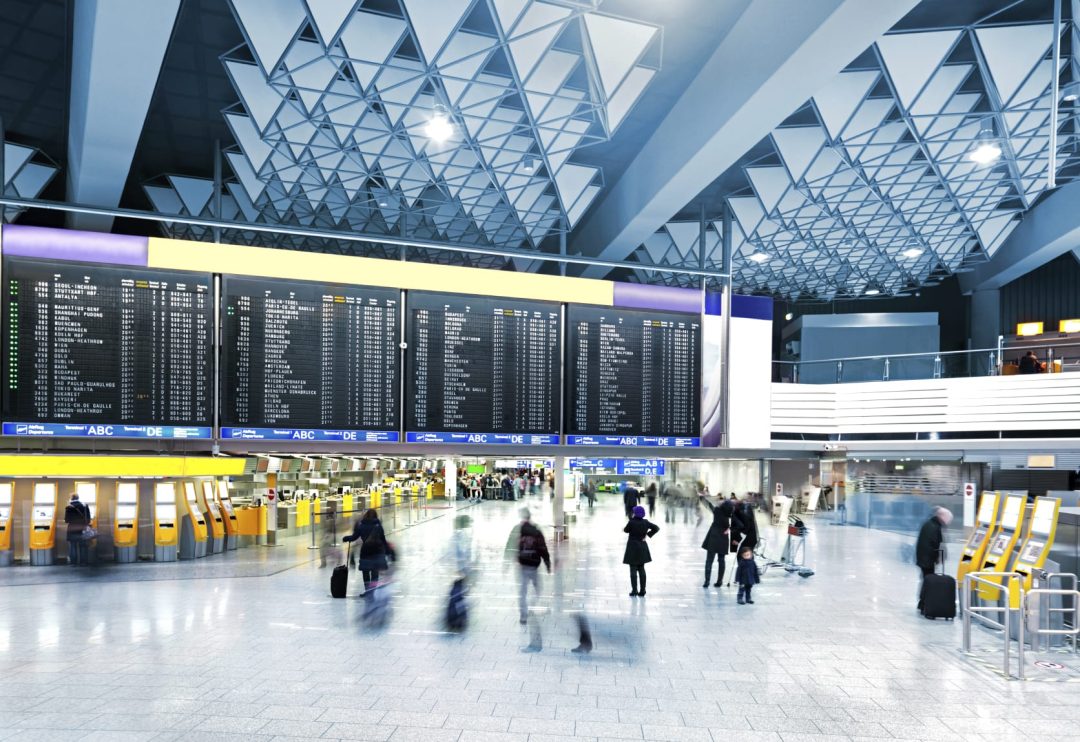The Digital Travel Credential (DTC), a step towards a simplified travel experience
The Digital Travel Credential (DTC) is designed to meet the challenges of fluidity, travel experience and control, while maintaining a high level of security at border crossings.

The COVID-19 crisis is having an unprecedented impact on international travel volumes. Due to national and international restrictions in place to combat the virus' spread, governments, together with international standardisation bodies, are innovating and accelerating their digital transformation in order to reopen borders. One of the possible answers, proposed by the International Civil Aviation Organization (ICAO), to the challenges that the travel industry is facing is the creation of a digital health passport associated with a digital identity dedicated to travel: the "Digital Travel Credential".
The concept of Digital Travel Credential
The DTC is a digital travel identity that offers an alternative to the physical passport, creating new uses. Although the concept of the Digital Travel Credential is new, it is based on existing standards (ICAO Doc 9303). Its goal is to eventually achieve a level of security equivalent to an electronic passport and to make it possible to interoperate with existing inspection systems.
The DTC consists of two parts:
- A Virtual Component, which represents the data. It is a file that can be stored on any medium whose security is based on a cryptographic link with the Physical Component. This file contains the structured data of the identity according to the LDS (Logical Data Structure) standard.
- A Physical Component with cryptographic and communication capabilities such as an electronic passport, a smartphone or a connected watch. This will be worn by the traveller as proof of possession to increase the level of identification of the passenger.
The different types of Digital Travel Credential
The nomenclature describes three types of DTC, which will allow progressive development and adoption.
- DTC Type 1 (eMRTD Bound): The Digital Travel Credential is generated by the user directly on his or her smartphone or from a self-service kiosk by reading the chip in the passport. The passport is considered the physical component.
- DTC Type 2 (eMRTD-PC Bound): The Digital Travel Credential is issued and digitally signed by a passport issuing authority. In addition to being linked to the passport, the DTC can be linked, through cryptographic mechanisms, to an additional “physical component”.
- DTC Type 3 (PC Bound): The Digital Travel Credential is issued and digitally signed by an issuing authority independently of a passport linked with a physical component (smartphone, connected watch...). The DTC has its own life cycle.
An innovation to simplify the traveller's journey
Beyond safety, two key issues in the traveller journey are driving the evolution of systems:
Evolution of passenger volume
Although the travel restrictions resulting from the global coronavirus pandemic have led to a significant drop in passenger demand, the projections for sustained growth are well reflected in the long-term trends. For instance, the International Air Transport Association (IATA) expects substantial pressure from emerging markets over the next two decades. Travel is expected to grow by 4-8% per year in Russia, Brazil and Mexico, while double-digit growth is likely in China and India.*
Anticipation of border crossings
On the one hand, the perspective of a reliable digital identity that can be shared in advance of the journey makes it possible to reduce the time taken for checks through new authentication and verification mechanisms.
An extended travel identity
On the other hand, it allows the addition of new attributes needed for the travel, such as an updated photograph or a health pass with simplicity and tomorrow an eVisa. These points make a strong case for the technology to further develop in order to support, accelerate and secure border management in the future.
The evolution of requirements and behaviours for an improved user experience
In the same way that today's e-passports allow passengers to use automated border crossing gates (ABC) and bypass manual passport control, the Digital Travel Credential should play a similar role by processing data more efficiently.
For example, a traveller can instantly apply for and receive an entry visa, book airfare and hotels in advance of the journey, on certain routes, using his or her DTC to provide information.
During the travel, the Digital Travel Credential technology can be combined with other technologies to enable passengers to arrive at the airport and navigate their way through check-in, baggage drop-off, immigration, security and boarding without ever having to take their travel document out of their pocket.
This vision of an automated, self-service and frictionless journey through the airport offers an enhanced experience for travellers and a major opportunity to speed up passenger processing at busy international transport hubs or borders. It also helps ensure that airlines and other travel providers meet their regulatory obligations.
In conclusion, the development of a digital travel identity certainly represents a fundamental change in the way travellers will choose to share their identity to be authenticated while traveling. It will allow freer and faster movement of people and opportunities for airports, airlines and governments to offer new experiences and enhance safety. However, it also presents challenges, starting with the establishment and most importantly the adoption of standards and specifications by governments, industry and citizens around the world.





